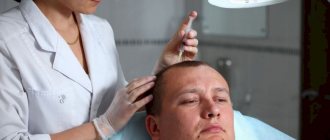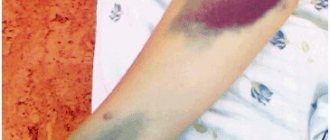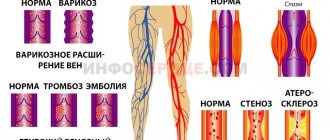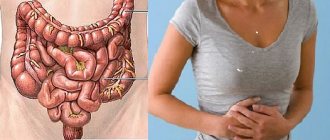Hernia of the white line refers to the pathological conditions of the human body. A characteristic feature of this disease is the appearance of gaps in the places where muscle fibers attach to the connective tissue. Through them, a hernia forms with protrusion of the fat layer.
If treatment is not started in time, there is a fear of internal organs being displaced into it. And this, in turn, threatens tissue pinching and necrosis. Then peritonitis and that's it. Gloomy.
Therefore, it is strongly recommended to start treatment as early as possible and there is only one method - surgery to remove the hernia of the white line of the abdomen.
So is there still diastasis or not?
Indeed, in most cases, everything is quite clear and obvious: when the muscles of the anterior abdominal wall are tense, such a longitudinal slide is formed along the midline of the abdomen. Checking for diastasis is easy. You need to lie on your back, bend your knees, placing your feet on the floor. Tighten your abdominals a little (you can press your chin to your chest). Use your fingers to explore the distance between the rectus abdominis muscles. If the distance is more than two fingers, you have diastasis.
How to fight
Diastasis of the rectus muscles should be treated taking into account the degree of its manifestation. For mild forms, it is enough to follow a balanced diet, limiting the consumption of fatty foods, fresh bread, baked goods, sweets, and carbonated drinks. In overweight patients, increasing the daily volume of water they drink to at least 2 liters helps speed up the breakdown of fat. A properly selected set of exercises is considered a safe but effective method of solving the problem.
During pregnancy, such training helps prevent the development of the consequences of diastasis. If the cause of the defect is a chronic disease, then the main set of therapeutic measures is aimed at treating it.
III degree abdominal diastasis is characterized by weakness of the deep muscles. Treatment is carried out through surgery.
Modern auxiliary methods for correcting rectus muscle discrepancies include taping. The procedure involves applying elastic adhesive strips to the abdominal muscles in a specific pattern. In combination with exercises, it helps reduce pain, normalize the tone of muscle tissue, and improve blood flow in the problem area. The tape provides support for the white line of the abdomen, replacing the functions of connective tissue. The abdominal muscles are stabilized, and the risk of divergence during exercise is reduced.
Set of exercises
Training to restore the function of muscle tissue and prevent the development of complications of diastasis is performed under the guidance of a specialist. He selects exercises with the correct load that will not aggravate the situation. Particular attention is paid to the oblique abdominal muscle. Increasing its volume during pumping reduces the size of the stretching of the white line.
The Pilates system is considered one of the best sets of exercises. The training is aimed at strengthening the deep transverse muscle, which maintains normal intra-abdominal pressure and reduces the risk of organ prolapse.
Exercises, descriptions and photos of which are presented below, help to properly get rid of diastasis:
- Cat. Combines dynamic and static loads on muscle groups of the back and abdomen. Take the starting position on all fours. The arms are straightened, the legs are bent at a right angle, the palms are tightly adjacent to the surface in the forward direction. Take a deep breath, bend your back down, and lift your pelvis and head up. Count to 8-10, return to I.P. Repeat the movement in the opposite direction. As you exhale, arch your back and lower your head down. The described cycle is performed for 5-10 r.
- While lying on your back, bend your knees. Feet are in close contact with the floor. Alternately raise the right and left legs, 10 rubles each. each.
- Remain in the same IP. Retract the abs below the navel and hold the pose for 10-30 seconds. Perform 3 r. 10 repetitions per day. Exercise strengthens and tones the transverse muscles.
- Plank. They stand facing the wall, resting their palms against it. Arms and shoulders are straight. The stomach is pulled in deeply so that the navel is closer to the spine. After 10 sec. Return to I.P. Repeat the movement 10 times.
- Lie on the floor, hands clasped behind the head. The straightened legs are raised, making movements like “steps”. Perform the exercise for 15-20 rubles. in 3 stages.
- They press their backs against the wall, holding a small ball with their knees. Squat, staying in this position for 30 seconds. Return to I.P. The number of repetitions is no more than 5-10 rubles.
- Vacuum. An effective exercise that helps restore the tone of the internal transverse abdominal muscle. To perform this, you need to lie on the floor, bend your knees, and place your arms along your body. After a slow exhalation, tense the abs, pulling it towards the spine. The delay at the bottom point is 10-15 seconds. Inhale, tensing your abdominal muscles even more. They leave the vacuum state by inhaling and exhaling, taking into account the needs of the body. The muscles are tensed again, trying to push the stomach out. There should be no breathing at this moment. Take a big breath and relax. After mastering the technique, it is permissible to perform the exercise in a sitting, standing, or on all fours position. Number of repetitions – 5 rubles.
When training, you need to keep in mind that some exercises can be harmful. These include yoga asanas that require stretching the abdominal muscles, actions with weights, active work of the upper spine, while lying on a fitball. Exercising in compliance with all the rules will help you achieve a pleasant result in 2-3 months.
Massage in addition
Not only physical activity and diet help speed up the process of correcting the defect. Additionally, physiotherapy is prescribed, among which massage is considered the most effective. It includes circular, longitudinal massaging movements in the affected area. The massage is carried out using products with panthenol and special oils that increase skin elasticity. The procedure helps improve tone, tissue nutrition, and stimulates tendon contraction. In combination with exercises, it reduces the risk of diastasis transitioning to another stage.
Surgical intervention
The operation is prescribed for severe pathology and the presence of complications. Its goal is to eliminate the defect and strengthen the weakened white line. Depending on the degree of diastasis, the type of surgical intervention is determined.
In the absence of complications, abdominoplasty is performed, which consists of restoring the correct proportions of the abdomen. There are 3 types of operations:
- Mini abdominoplasty. The manipulations are aimed at excision of excess skin in the lower part of the abdominal wall. A small seam remains at the bottom of the abdomen.
- Standard. Includes suturing of muscles, tightening of skin, including the navel area. The stitch will be longer, the recovery period will increase.
- Endoscopic. It is carried out when there is no need to excise the remnants of the skin, if it has retained its elasticity and firmness. The intervention occurs through 2-3 small incisions under endoscopic control. The seams are practically invisible.
Abdominoplasty involves using only body tissue to return muscles to their original position. The option of installing a mesh endoprosthesis will help avoid recurrence of diastasis.
The presence of a complication in the form of a hernia requires open or laparoscopic hernioplasty. With the open method, an incision is made in the superficial tissues, so endoscopic surgery is considered the safest for the body and is characterized by less blood loss and pain. The rehabilitation period lasts no more than 30 days; the patient is allowed to leave the hospital after 24 hours. In the first case, its duration is from 3 months, visiting the gym, and any physical activity is prohibited.
The main rule of the postoperative period is to avoid lifting heavy objects, which can cause the sutures to separate. It is not recommended to make sudden movements. When laughing or coughing, you need to support your stomach and try not to strain your abs.
Belly keel
On the anterior abdominal wall, along its midline, there is a tendon strip. This is a ligament that connects the rectus abdominis muscles, which (like connective tissue in general) has a whitish color. Anatomists of the past did not hesitate with the name. Simple and clear: linea alba. The origin of this tendon strip is complex. It is precisely “complex”, because it is made up of the membranes of the muscles of the anterior abdominal wall. It does not have an important physiological function. In essence, it is just a suture, but surgeons are very fond of the white line: it is along the midline that the main approaches to the abdominal organs are made - median laparotomy in all its variants. Diastasis of the rectus abdominis muscles is the separation of these muscles with a widening of the white line between them.
Surgical intervention
As for diastasis caused by pregnancy, it is recommended to begin surgical treatment of the problem no earlier than a year later, since in most women during this period the problem goes away on its own, and the muscles return to their normal anatomical position.
But if the pathology remains and physical activity is ineffective, then it can only be corrected with the help of plastic surgery.
As a rule, it is prescribed for grades 2 and 3 of pathology, when the discrepancy is 5 cm or more. Surgery to eliminate diastasis of the rectus abdominis muscles can be performed in several ways.
Endoscopic abdominoplasty
This type of surgery is appropriate if the patient does not have excess subcutaneous fat and excessive excess skin.
Typically, such women have a fairly flat stomach, but when the peritoneum is tense, diastasis appears, even leading to hernias.
The operation is considered minimally invasive, since access to the necessary tissues is carried out through small punctures of the skin.
Surgeons fundamentally do not make longitudinal or transverse incisions, since this can disrupt the aesthetic appearance of the abdomen.
To stitch together a potentially weak anatomical formation, the aponeurosis, a mesh allograft can be used.
First, the surgeon sutures the diastasis and then additionally fixes it with suture material along the edge.
A synthetic mesh covers the area of the sutured diastasis and after about 2 months it is overgrown with connective tissue.
As a result, a strong connecting structure is formed, the thickness of which does not exceed 0.2 cm. It prevents repeated stretching of the tissues and withstands serious loads.
If diastasis is accompanied by the presence of hernias, then surgical intervention is supplemented with hernioplasty.
With the help of endoscopic instruments, the organs that are trapped in the hernial sac are moved to the correct anatomical position.
And a mesh is applied to the hernial area, which reduces pressure and tension of the tissues. The mesh is fixed with a herniostapler.
Such operations provide excellent aesthetic results, since the puncture sites become almost invisible after a few months. And the rehabilitation period is quite short (about 2 weeks).
Operation with incisions
If the patient has excess fat deposits in the abdominal area or stretched, loose skin, then surgery is performed through an incision.
Usually the surgeon performs it in the suprapubic area. During the operation, excess aponeurosis is removed and a mesh is sewn in.
Additionally, surgical intervention is supplemented by excision of excess skin and removal of subcutaneous fat, formation or relocation of the navel.
Why does diastasis occur?
Of course, muscle separation does not happen on its own. The reasons are different: it can be pregnancy, heavy physical activity and weakness of the connective tissue itself in the area of the white line. Although the weakness of connective tissue should be brought to the forefront. This is an innate feature. Not all pregnant women and not all people who lift weights experience widening of the linea alba!
Most often, women who notice changes in the abdominal wall after childbirth turn to the surgeon. Isolated cases occur after heavy physical exertion. Diastasis can also occur in newborns. People live and don’t even suspect that there is a small discrepancy until they look on the Internet.
So what to do?
Firstly, you need to be sure of the diagnosis and that the situation is with diastasis, and not a hernia defect. Moreover, one does not interfere with the other. We go to the surgeon, in addition, an ultrasound examination is prescribed and the stage of diastasis is determined. The integrity of the white line is also clarified (is there a hernia?). Treatment tactics depend on this.
At the initial stage, the separation of the abdominal muscles causes only an aesthetic inconvenience. This does not affect your health. At an advanced stage of diastasis, surgeons’ approach is more careful. The fact is that with a pronounced distance between the rectus muscles, anatomical changes occur in all the muscles of the anterior abdominal wall.
It is the abdominal muscles that form the intra-abdominal pressure that supports the internal organs. There will be no normal intra-abdominal pressure (and this often happens in older people), and there will be no normal functioning of the entire digestive system. The ligamentous apparatus that supports the organs and fixes them to the posterior wall of the abdominal cavity suffers. Tension of the intestinal mesentery occurs, and hence the appearance of abdominal pain in a standing position. The abdominal press is necessary for the normal process of defecation, for normal labor. Do not forget that an excessively wide linea alba is a risk of hernia formation and a risk (rarely) of its rupture due to excessive physical exertion.
Therefore, the surgeon may recommend surgery.
What should you avoid?
When a problem such as diastasis occurs, the first step is to avoid anything that increases pressure in the abdominal cavity.
Firstly, keep in mind that you should not lift weights exceeding 4-5 kg, and if you have to move any load, this is done with your arms extended forward with your elbows bent.
Secondly, be sure to use a postpartum bandage or a tight belly band if you need to regularly carry your baby.
Should you wear a postpartum bandage?
Thirdly, when coughing, you need to lightly hold your abs with your hand, avoiding distending your abdomen.
Fourth, when you get out of bed, do it from a position on your side, and if you need to get up from a chair, start by placing the main weight on one of the buttocks and drawing in your stomach. It is important that the main muscle load falls on the legs.
Fifthly, try to maintain correct posture - it will be harmful to both arch your back in the lumbar region and slouch too much.
It is worth constantly monitoring your posture
Sixth, the ideal sleeping position is on your side or back. If you have a habit of sleeping on your stomach, give it up, since this position increases the load on the midline white line and the muscular part of the abdominal cavity as a whole, especially on the front part, which causes the muscles to be subjected to additional stretching.
In some cases, the situation becomes so advanced that muscle surgery is required - usually this concerns the third stage of diastasis.
In the third stage of diastasis, surgery may be required
Note! When performing surgical intervention, the main goal is to completely eliminate diastasis and provide a strengthening effect on the corresponding muscle area. Usually this method brings excellent results.
Surgical treatment of diastasis
It is worth noting right away: the world surgical community has not reached a consensus on which surgical technique is considered the best .
Everything will depend on how technically equipped the surgical department is and the practical experience of the doctor in the region where you live. It also depends on what aesthetic requirements you will have for surgical intervention.
It is clear that all operations are aimed at reducing the distance between the rectus abdominis muscles, while adding strength to the linea alba.
Traditional methods
Extraperitoneal method of Champion (Schampioner)
Lucas Championer French surgeon 1843-1913, introduced antiseptics to France. And he was one of the first to develop a technique that allows reducing the distance between the rectus muscles.
The technique gave quite a lot of relapses. During this operation, the sheaths of the rectus abdominis muscles are not dissected (although this is a plus from a physiological point of view).
Napalkov method
According to the method of N.I.Napalkov, three rows of seams were formed
Martynov's method
During Martynov's operation it was possible to obtain a fairly strong connection. The technique is similar to the Sapezhko operation (the edges of the aponeurosis are superimposed on one another like the edges of a robe). In modern versions of the Martynov technique, the second edge of the aponeurosis is not excised, but is sutured from below to another rectus muscle.
All these are traditional methods of plastic surgery, leading to the formation of an incision on the anterior abdominal wall. Now they are used less often. Usually if combined with a hernia.
How about we add a grid?
It is unlikely that Ziegler and Natta could have imagined that the polypropylene they synthesized in 1953 would be so loved by surgeons. For its biological inertia. First there were threads, then mesh structures woven from these threads began to be used in surgical practice. Polypropylene mesh was ideal for strengthening defects in the abdominal wall. Abroad, the use of allograft for the treatment of diastasis of the rectus muscles (and hernias of the white line, which are quite common with a large discrepancy) is the “gold standard”. All that remains is to decide where to sew this mesh. The mesh prosthesis is attached on top of the rectus abdominis muscles, otherwise it is located under them (above the peritoneum).
Still, more surgeons prefer the technique proposed by Rene Stoppa in 1975
But there is one thing...
There is a flip side to everything. The same is true with the use of mesh prostheses. The thing is that the polypropylene mesh itself is perceived by the body as a foreign body. For this obvious reason, the body tries to fence itself off from it: it forms scar tissue. First thought: this is what we need! Strong scar, strong tissue. As has already been seen in the figure with the anatomy of the anterior abdominal wall: its structure is quite complex. Three layers of muscle form the tendon sheath for the rectus abdominis muscles. Well, why did nature need to fence all this? The first obvious reason is mobility, and the second, which is usually forgotten, is that the stomach is involved in the act of breathing. The scar layer makes the anterior abdominal wall rigid (sedentary), which leads to atrophy of the rectus abdominis muscles and impairment. mobility.
By the way, for those who want to have a toned, flat stomach. The rectus abdominis muscles are not involved in this at all. Their task: bending the torso. Therefore, you need to train the oblique and transverse muscles to a greater extent. The Internet is full of photographs of bodybuilders with pronounced abs, and with a noticeably protruding belly
Minimally invasive techniques
Surgery through mini-access is the future. Abroad, it is called “keyhole surgery.” Technically, the operations are similar to traditional ones. But doing them requires a lot of practice and is more difficult. An undoubted advantage is the aesthetically unnoticeable scar in the navel area.
Operation
The following surgical methods are used.
Performing plastic surgery using nearby tissue - the plastic surgeon uses tissue from the front of the abdominal wall. This method is unpopular in modern surgical practice.
Tension-free plastic surgery – a special endoprosthesis is used. A special material made of synthetic threads is applied during the operation to the place where the diastasis is localized. Usually this method does not bring the desired visual effect.
Installation of endoprosthesis
Method of suturing diastasis in combination with endoprosthetics. In this case, the implant is used in conjunction with a full-fledged surgical intervention, due to which a synthetic mesh covers the damaged area and is attached to the side. Within two months, the prosthesis is connected to the body tissues, completely implanted. Over time, it will be a full-fledged structure made of fabrics with synthetic materials that can withstand quite heavy loads. Recurrence of the diastasis condition in this case is possible in 1% of cases (with 20% in other cases without an implant).
Suturing of diastasis
By the way. When implementing the previous method, it can be combined with abdominoplasty. This is usually done in complicated stages of diastasis with a complication in the form of a hernia, as well as in the presence of serious scars and stretch marks.
Any of the operations using a mesh implant is done either openly or using endoscopic equipment - laparoscopically. The second method of performing the operation is now more common.
Nowadays operations are more often done laparoscopically
Hernioplasty for diastasis has a number of advantages:
- reduction of pain;
- probability of relapse – no more than 1%;
- no noticeable scars;
- The rehabilitation period is short.
Important! It is impossible to single out any ideal method for eliminating diastasis. This issue is always resolved with a doctor, who takes into account all the individual characteristics of the patient’s body and his medical history. Choosing a treatment method on your own and making any attempts to get rid of such a problem is dangerous to your health.
At the moment, advances in medicine are such that the use of the latest generation equipment, ideally thin materials for sutures and implants can guarantee that the quality of the surgical procedures performed will be at the highest level. However, remember: if you notice any serious deviations from the norm, the sooner you go to see a doctor, the greater the likelihood that the problem will be resolved in a timely manner and complications will be avoided.
It is better to consult a doctor immediately if such a problem is detected.
How to avoid diastasis after childbirth?
Many women, having noticed a distended abdomen after the birth of a child, naturally immediately try to return it to its original state. Most often: bending and straightening the torso (“pump up your abs”). So you can’t put ! At the end of pregnancy, a number of physiological changes occur in a woman’s body, including changes in the structure of connective tissue (becoming looser). Therefore, after giving birth, you need to do general strengthening exercises for six months: swimming pool, walking, running.
Manifestations of hernia of the white line of the abdomen
The disease can be suspected if a small bulge is suddenly palpated in the midline of the patient's abdomen. Very often it does not cause pain and can be discovered accidentally by the patient himself or by the doctor during examination. Due to the fact that in a normal state the neoplasm, as such, may not cause pain, one of the indicators that allows one to suspect it is the appearance of pain during heavy work, after eating, or in other situations that lead to increased intra-abdominal pressure. An increase in pain may be associated with tension in organs and other structures fixed to the hernial sac, or as a result of strangulation of the contents of the hernial protrusion, which in turn requires emergency surgical intervention. Painful sensations can radiate to various areas of the chest, abdomen and back. When the muscles of the abdominal wall are relaxed in a horizontal position on the back, the hernial protrusion, and with it the pain, often disappears. In the event of such a formidable and extremely dangerous complication as a strangulated hernia, all the symptoms of an acute abdomen occur and general intoxication of the body increases: the temperature rises, piercing, intensely intensifying abdominal pain appears, nausea and vomiting, retention of stool and gases, and bloody discharge in the stool. , and the hernial protrusion can no longer be reduced in the supine position. Often the symptoms accompanying the disease are disorders of the digestive system such as nausea, heartburn, belching, associated with the entry of the digestive tract into the hernial sac.
So to treat or not to treat?
So. First, we determine whether there is diastasis. We palpate the abdomen or go to a specialist. Secondly: is there a hernia defect? If so, then you need to decide on surgical treatment. If there is no hernia defect, then decide for yourself: how much does this bother you? With a slight expansion it is not dangerous to health. If there is a significant discrepancy, weigh the pros and cons with your doctor.
Palamarchuk Vyacheslav
If you find a typo in the text, please let me know. Select a piece of text and press Ctrl+Enter.
Tags: hernia, diastasis
- Related Posts
- Treatment of inguinal hernia with a mosquito net
« Previous entry











